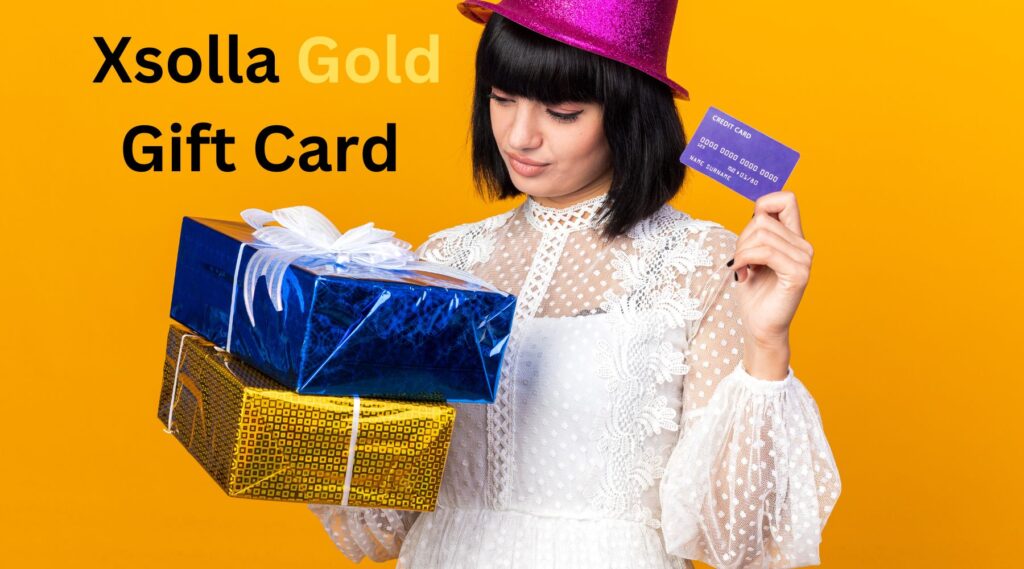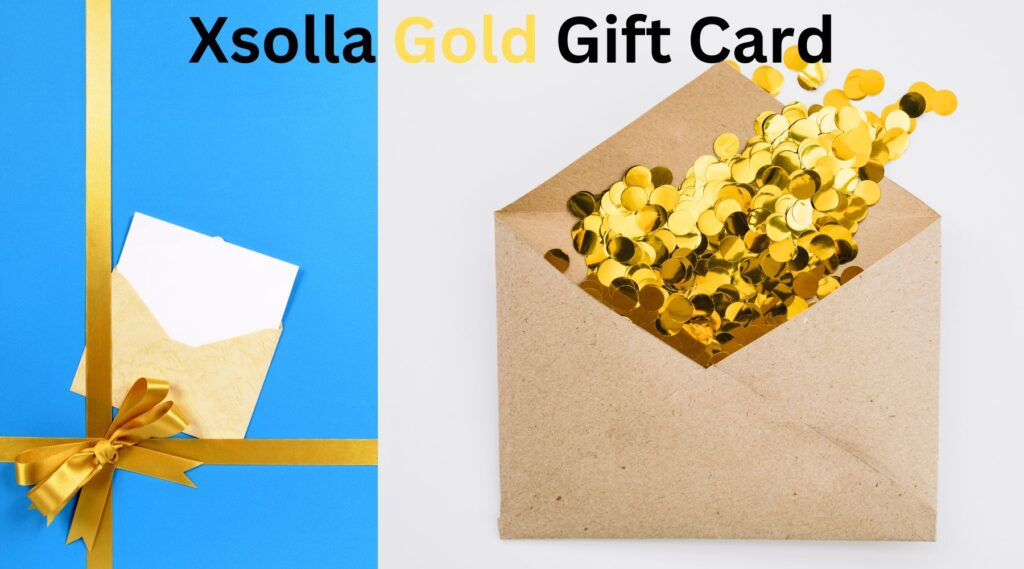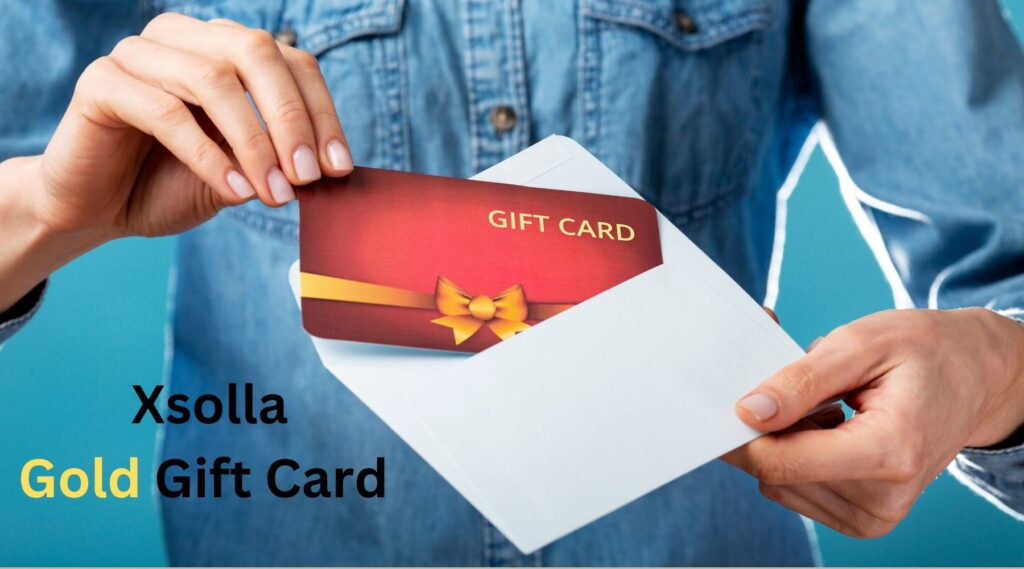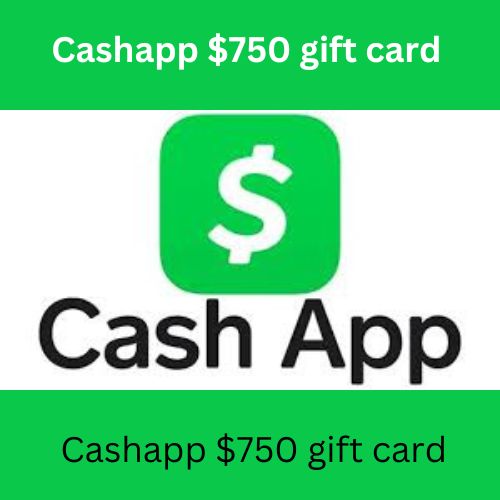Xsolla Gold Gift Card Launches: A New Era of Game Brand Visibility and Payment Solutions

Introduction of Xsolla Gold Gift Card
Xsolla Gold Gift Card : In a significant step towards enhancing the gaming experience, Xsolla, a leading global video game commerce company, has announced the launch of the Xsolla Gold Gift Card. This innovative payment solution is designed to reshape how gamers purchase, gift, and redeem virtual goods, providing a seamless experience across both physical and digital channels. As the gaming industry continues to evolve, the Xsolla Gold Gift Card stands out as a versatile tool that not only enhances player engagement but also opens new avenues for developers to reach a broader audience.

Meta Description of Xsolla Gold Gift Card
Discover how the Xsolla Gold Gift Card is revolutionizing game payments by offering flexible, accessible solutions for gamers and developers alike, enhancing brand visibility and community engagement.

The Growing Gift Card Market
The global gift card market is projected to reach an astonishing $5.3 trillion by 2033, presenting a wealth of opportunities for game developers. With this surge in demand, the Xsolla Gold Gift Card emerges as a pivotal solution, enabling developers to tap into new monetization strategies while enhancing player interactions. The gift card allows for seamless acquisition of in-game items, making it easier for players to engage with their favorite titles.

Benefits for Players and Developers
The Xsolla Gold Gift Card is tailored to meet the needs of both gamers and developers. Here are some of the key benefits:
1. Flexible Distribution Options
The gift card is available in both physical and digital formats, ensuring broad accessibility for players around the globe. Whether gamers prefer to purchase a card in-store or online, Xsolla caters to their preferences.

2. Enhanced Community Engagement
Gifting has always been a crucial aspect of gaming culture. The Xsolla Gold Gift Card encourages players to share their gaming experiences with friends, fostering deeper connections within gaming communities. This social aspect can lead to increased player retention and loyalty.

3. Monetization and Marketing Opportunities
Developers can leverage the Xsolla Gold Gift Card for cross-promotions and partnerships with retail brands. Additionally, exclusive in-game offers tied to the gift card can drive engagement and revenue, enhancing overall monetization strategies.

4. Cross-Platform Usability
One of the standout features of the Xsolla Gold Gift Card is its compatibility across multiple platforms and game titles. This ensures that it caters to a diverse player base, accommodating various spending preferences and gaming habits.

Insights from Xsolla Leadership
Chris Hewish, Chief Strategy Officer of Xsolla, expressed excitement about the new gift card, stating, “We’re excited to offer a gift card to help simplify how players purchase and share virtual goods while helping developers increase player retention and engagement through strategic integrations.” This statement underscores Xsolla’s commitment to innovation in the gaming space and highlights the potential of the Xsolla Gold Gift Card to transform player interactions.
Frequently Asked Questions (FAQ)
What can I purchase with the Xsolla Gold Gift Card?
The Xsolla Gold Gift Card can be used to acquire various in-game items, unlock game content, and redeem rewards across multiple game titles.
How do I redeem my Xsolla Gold Gift Card?
To redeem your gift card, simply follow the instructions provided with the card. This typically involves entering a unique code on the game’s platform or website.
Are there any limitations on the Xsolla Gold Gift Card?
While the card is designed for broad usability, specific games or platforms may have their own terms and conditions regarding the use of gift cards. It’s advisable to check the details related to your chosen game.
Can I gift the Xsolla Gold Gift Card to someone else?
Absolutely! The gift card is designed for gifting, allowing you to share the joy of gaming with friends and family.
How can developers integrate the Xsolla Gold Gift Card into their games?
Developers can easily integrate the Xsolla Gold Gift Card into their ecosystems by utilizing Xsolla’s robust set of tools and services, enabling tailored campaigns and promotions.
Conclusion
The launch of the Xsolla Gold Gift Card marks a transformative moment in the gaming industry, offering new ways for players to interact with their favorite games while providing developers with innovative tools to enhance brand visibility and engagement. With its flexible distribution options, community engagement features, and cross-platform usability, the Xsolla Gold Gift Card is poised to redefine the landscape of game commerce. As Xsolla continues to innovate, the Gold Gift Card is a testament to the company’s commitment to enriching the gaming experience for players and developers alike.
For more information about the Xsolla Gold Gift Card, visit ……………
About Xsolla
Founded in 2005, Xsolla has established itself as a leader in video game commerce, providing a comprehensive suite of tools and services designed for developers and publishers worldwide. Headquartered in Los Angeles, California, with a global presence, Xsolla aims to simplify the complexities of global distribution, marketing, and monetization, allowing its partners to reach new heights in the gaming industry. For additional information, visit …………….
Certainly! Xsolla’s marketing strategies for the Xsolla Gold Gift Card are designed to maximize brand visibility, engage players, and create new revenue opportunities for developers. Here are several key strategies they might employ:
1. Co-Branded Promotions
- Partnerships with Retail Brands: Xsolla could collaborate with retail stores to offer the gift cards in physical locations. This creates a tangible presence in the marketplace and leverages the reach of established retail brands.
- Cross-Promotions with Popular Games: By partnering with popular game titles, Xsolla can run promotions where the gift card provides exclusive in-game content or discounts, attracting players from those communities.
2. Targeted Digital Marketing Campaigns
- Social Media Advertising: Utilizing platforms like Facebook, Instagram, and TikTok to promote the gift card can effectively reach a younger audience. Creative campaigns showcasing the gifting experience can drive engagement.
- Influencer Partnerships: Collaborating with gaming influencers to showcase the gift card can enhance credibility and reach. Influencers can demonstrate how easy it is to use the card for in-game purchases, appealing to their followers.
3. Email Marketing and Newsletters
- Targeted Email Campaigns: Sending personalized emails to existing customers can inform them about the gift card and its benefits. This could include special offers or promotions to encourage purchases.
- Regular Updates on Promotions: Keeping players informed about new games or exclusive offers tied to the gift card through newsletters can maintain interest and drive sales.
4. In-Game Promotions
- Exclusive In-Game Rewards: Offering players exclusive items or bonuses for using the Xsolla Gold Gift Card can incentivize purchases and enhance the overall gaming experience.
- Limited-Time Offers: Creating urgency with limited-time deals or promotions associated with the gift card can prompt quicker purchase decisions.
5. Community Engagement Initiatives
- Gifting Events: Organizing events where players can gift cards to friends or participate in community challenges can foster engagement. This encourages players to share their experiences, amplifying word-of-mouth marketing.
- User-Generated Content Campaigns: Encouraging players to share their gifting experiences on social media can create a buzz around the gift card, showcasing its ease of use and benefits.
6. Flexible Redemption Options
- Cross-Platform Usability: Promoting the card’s compatibility across multiple platforms can attract a diverse player base. Highlighting this feature in marketing materials can emphasize the card’s versatility and appeal to various gaming communities.
7. Educational Content
- How-To Guides and Tutorials: Creating content that explains how to purchase, gift, and redeem the gift cards can help demystify the process for potential users. This can be shared through blogs, videos, and social media.
Xsolla likely employs a variety of metrics to measure the success of its marketing strategies for the Xsolla Gold Gift Card. Here are some key metrics they might focus on:
1. Sales Metrics
- Total Sales Revenue: Tracking the overall revenue generated from gift card sales helps gauge the effectiveness of promotional campaigns.
- Units Sold: Monitoring the number of gift cards sold can indicate market demand and the success of specific marketing initiatives.
2. Customer Engagement Metrics
- Social Media Engagement: Metrics such as likes, shares, comments, and follower growth on platforms like Facebook, Instagram, and Twitter can help assess the reach and impact of social media campaigns.
- Email Open and Click-Through Rates: Analyzing the open rates and click-through rates of email campaigns provides insight into how well the messaging resonates with the audience.
3. Redemption Metrics
- Redemption Rates: Measuring the percentage of gift cards that are redeemed versus those sold can indicate customer satisfaction and the perceived value of the cards.
- Average Transaction Value: Monitoring the average amount spent during transactions using the gift card can provide insights into consumer behavior and spending patterns.
4. Customer Acquisition Metrics
- New Customer Sign-Ups: Tracking the number of new accounts created as a result of gift card promotions can help assess the effectiveness of campaigns in attracting new players.
- Cost Per Acquisition (CPA): Calculating the cost associated with acquiring a new customer through gift card promotions can help determine the return on investment (ROI) of marketing efforts.
5. Retention Metrics
- Repeat Purchase Rate: Measuring the frequency with which customers return to purchase additional gift cards can indicate customer loyalty and satisfaction.
- Customer Lifetime Value (CLV): Analyzing the long-term value of customers who purchase gift cards can help in understanding the overall impact on revenue.
6. Website Analytics
- Traffic Sources: Using analytics tools to track where website traffic is coming from (e.g., social media, email campaigns, direct visits) can help identify which marketing channels are most effective.
- Conversion Rates: Monitoring the percentage of visitors who complete a purchase after visiting the gift card page can provide insights into the effectiveness of the sales funnel.
7. Campaign-Specific Metrics
- Performance of Co-Branded Promotions: Assessing the success of specific co-branded campaigns through metrics such as engagement, sales, and customer feedback can provide targeted insights.
- Influencer Campaign Impact: Tracking metrics like reach, engagement, and conversions from influencer partnerships can help evaluate the effectiveness of these collaborations.
Balancing Cost Per Acquisition (CPA) with Customer Lifetime Value (CLV) is crucial for Xsolla to ensure sustainable growth and profitability. Here’s how Xsolla might approach this balance in its strategies:
1. Targeted Marketing Campaigns
- Segmented Audiences: By identifying and targeting specific demographics that are more likely to become loyal customers, Xsolla can reduce CPA. This ensures that marketing efforts are focused on high-value segments with a higher potential CLV.
- Personalized Offers: Tailoring promotions and offers to different audience segments can lead to higher conversion rates and more significant engagement, ultimately lowering CPA while enhancing CLV.
2. Data-Driven Decision Making
- Analytics and Insights: Utilizing data analytics to assess the effectiveness of various marketing channels helps Xsolla allocate budget more efficiently. By investing in channels that yield higher CLV, they can optimize CPA.
- A/B Testing: Running tests on different marketing messages and channels allows Xsolla to determine which tactics drive the best balance between CPA and CLV, enabling continuous improvement.
3. Enhancing Customer Experience
- Seamless Onboarding: Creating an easy onboarding process for new users can improve retention, increasing CLV. A positive initial experience can lead to repeat purchases and referrals, mitigating high CPA.
- Engagement Strategies: Implementing strategies that keep players engaged—such as loyalty programs, exclusive in-game content, or regular updates—can increase CLV by encouraging players to spend more over time.
4. Cross-Promotions and Bundling
- Cross-Selling Opportunities: By promoting the Gold Gift Card alongside other products or services, Xsolla can increase the average transaction value, enhancing CLV while leveraging existing customer relationships to lower CPA.
- Bundled Offers: Creating bundles that include the gift card with popular games or in-game content can attract more buyers and elevate both short-term sales and long-term customer value.
5. Retention-Focused Strategies
- Loyalty Programs: Implementing rewards or loyalty programs encourages repeat purchases and increases CLV. This can help offset higher CPA by ensuring that acquired customers continue to generate revenue over time.
- Feedback Loops: Actively seeking customer feedback and making improvements based on that input can enhance satisfaction and loyalty, directly impacting CLV.
6. Strategic Partnerships
- Collaborations with Game Developers: Partnering with game developers for exclusive offers or content can enhance the value of the gift card, attracting more customers and improving both CPA and CLV.
- Retail Partnerships: Collaborating with retail brands to sell gift cards can drive awareness and sales, potentially lowering CPA while maintaining or increasing CLV through wider distribution.
7. Monitoring and Adjusting Strategies
- Regular Review of Metrics: Continuously analyzing the relationship between CPA and CLV allows Xsolla to adjust their strategies as needed. If CPA increases, they can shift focus to optimizing retention and enhancing CLV to maintain profitability.
- Long-Term Focus: Emphasizing long-term customer relationships over short-term gains can lead to a more sustainable balance between CPA and CLV.
Conclusion
By employing targeted marketing, enhancing customer experiences, and leveraging partnerships, Xsolla can effectively balance CPA with CLV. This strategic approach ensures that marketing investments yield sustainable returns, fostering growth and profitability in the competitive gaming landscape.

